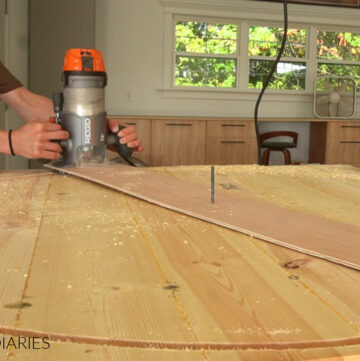In this post, I’m sharing when and how to use the Kreg XL Pocket Hole Jig!
The XL pocket hole jig is a specialty size in the Kreg line up of pocket hole jigs. And as you may have guessed by the name, it’s designed to drill EXTRA LARGE pocket holes for use in thicker materials.
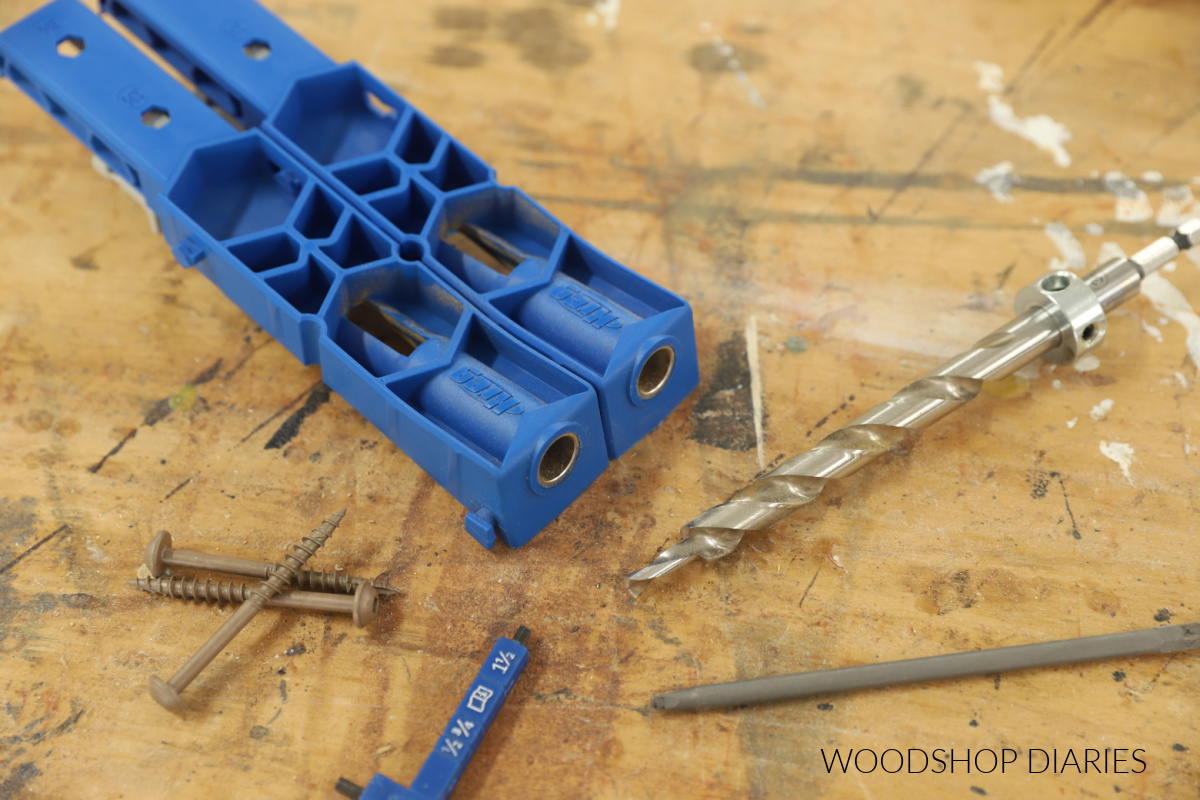
While this jig may not be useful in every workshop, it’s a must have if you’re ever building with 4x4s. This is the only pocket hole jig Kreg makes that’s designed to be used in materials up to 3 ½″ thick.
In case you didn’t already know, nominal 4x4s are 3 ½″ x 3 ½″. Learn more about lumber sizing standards here.
So if you’re looking to build BIG, I’m sharing when and how to use the Kreg XL pocket hole jig below.
*This post contains affiliate links. See website policies.
Parts of the XL Pocket Hole Jig
Before we dive into how the XL pocket hole jig works, let’s first discuss the various parts and some terminology.
The Kreg XL Pocket Hole Jig comes with a jig, a drill bit, stop collar, driving bit, and a hex wrench.
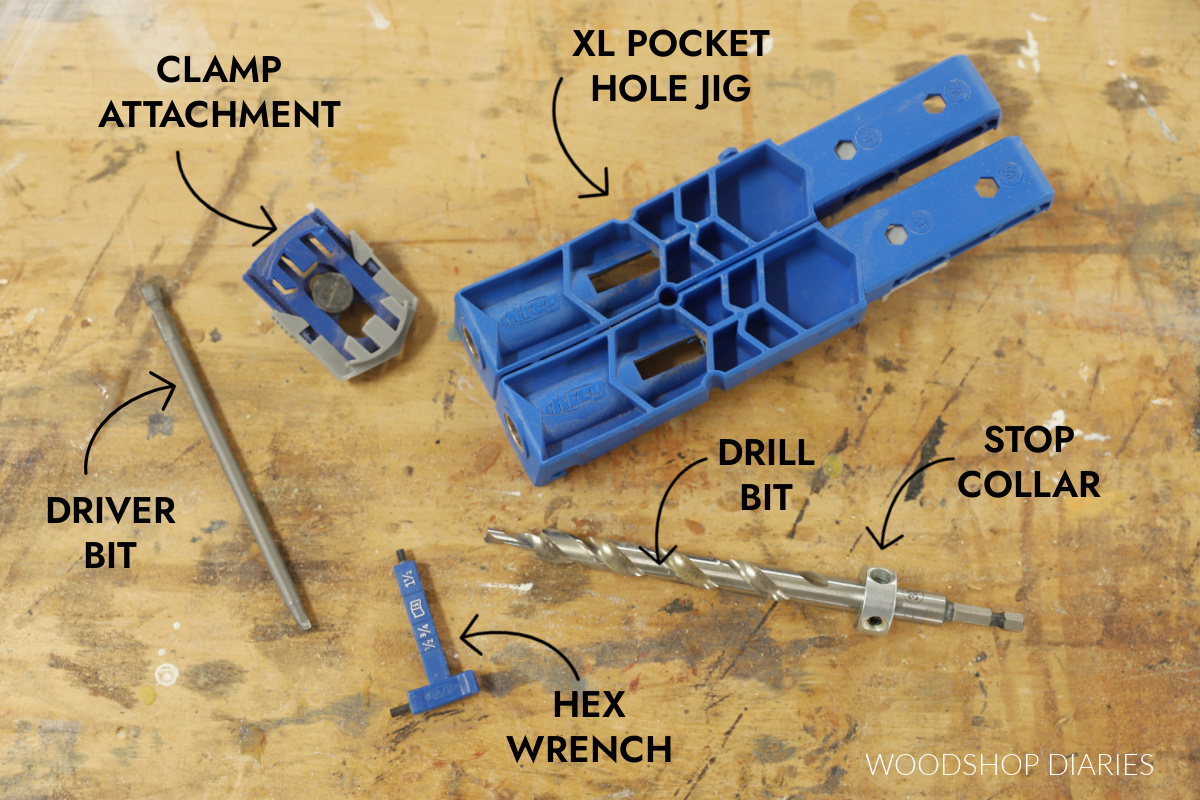
It also comes with a little attachment that fits on the top for clamping (I don’t really use this piece, but it’s included in the package).
The jig itself is in two sections that snap and lock together. So, you can snap them apart and use just one at a time or snap them together and use them both.

SIDE NOTE: I honestly can’t really think of a good reason to use just one at a time, but the option is there.
Also, if you bought multiple XL jigs, you could also snap them together to double up or extend the jig even wider–but again, not really sure why you’d want that, either haha. Just letting you know you could if you wanted 🙂
Are DIY projects your thing? Sign up for our newsletter for priority access to the latest projects and build plans!
WHAT MAKES THE XL JIG DIFFERENT?
If you’re familiar with the Kreg line of pocket hole jigs, you may notice the micro looks very similar to the Kreg 320.
They are ALMOST the same jig except for two things:
- The XL Pocket Hole jig’s drill guide is larger than the standard drill guide
- The XL Pocket Hole jig is only designed for use in 1 ½″ and 3 ½″ thick materials
Larger Pocket Hole Size
Standard size pocket hole jigs have a ⅜″ diameter drill guide hole and use a ⅜″ diameter drilling bit. But the XL pocket hole jig has a ½″ diameter drill guide hole and uses a ½″ diameter drilling bit.
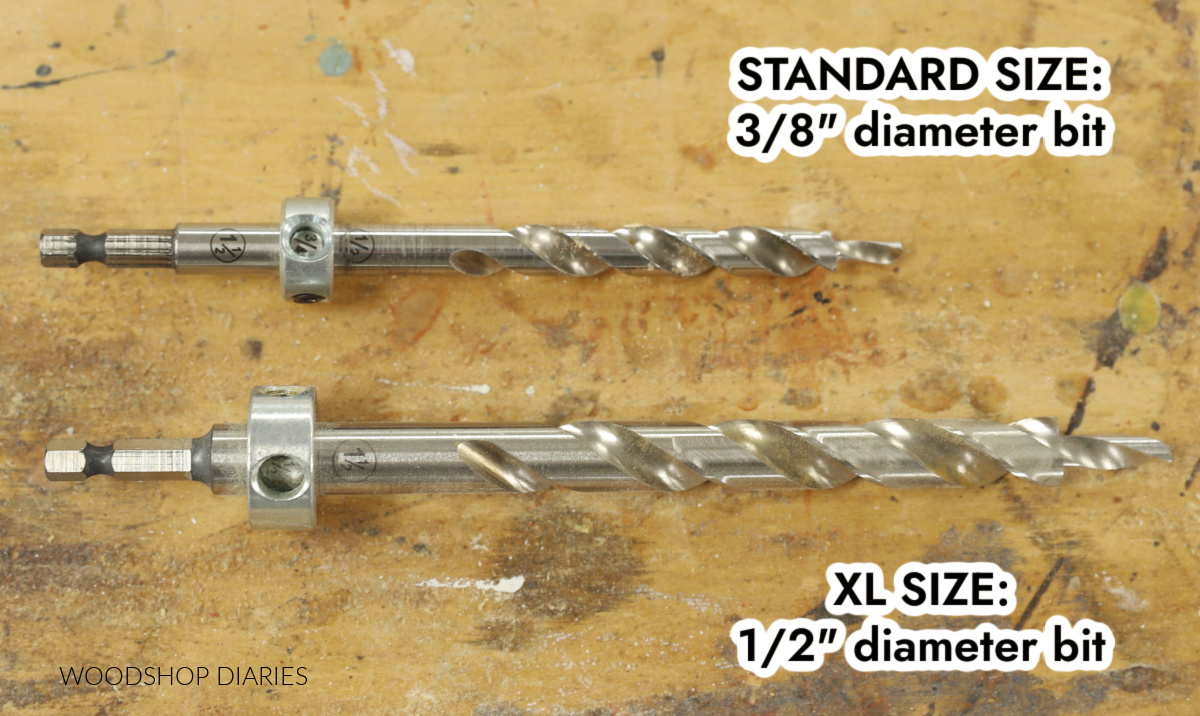
You can tell from the image above that the XL drill bit is significantly thicker and longer than the standard size drill bit.
That means the diameter of the pocket holes they make are also different. XL pocket holes are larger than standard pocket holes.
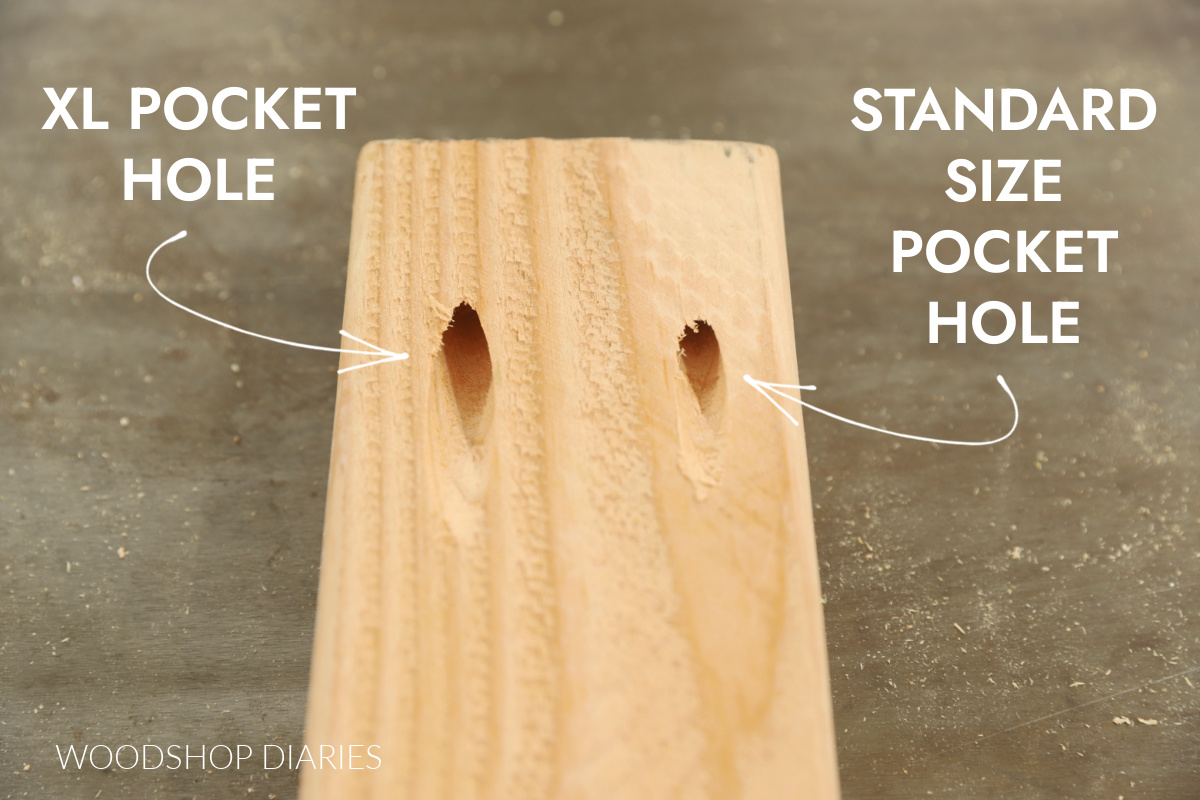
NOTE: It’s important to remember that the XL jig has its own drilling bit (it comes with the jig when purchased). You cannot use the the standard size drilling bit with the XL jig and you cannot use the XL drilling bit with a standard size jig.
Be sure not to mix these up if you have both standard and XL jigs in your shop.
FYI: You can purchase replacement (or spare) XL drill bits here.
Larger Screws
Because of the difference in pocket hole size, this also means, you’ll need to use a pocket hole screw with a larger head.
With standard size pocket holes, you want to use washer head screws. But with the XL, you need to use XL pocket hole screws.

XL pocket hole screws have a larger shank and a larger head that fits into the larger pocket holes. Screw length is based on material thickness and is discussed more later.
XL screws also have a larger square “hole” in the screw head than the standard washer head screws. So in addition to a larger drill bit, the drive bit that comes with the XL is also larger.
Standard washer head pocket hole screws use a #2 square drive, but XL pocket hole screws use a #3 square drive bit. This drive bit is included with the jig when purchased, but you can also buy spares separately, if needed.

NOTE: Just like with the drill bits, it’s important to remember that the XL jig comes with its own square drive bit. You can’t use the standard #2 square driver bit with XL screws and you can’t use the XL #3 square driver bit with standard screws.
Be sure not to mix these up if you have both standard and XL jigs in your shop.
Material Thickness
The other main difference with the XL pocket hole jig is that it’s only designed for use with 1 ½″ and 3 ½″ thick materials.
The standard size pocket hole jigs (like the Kreg 320, 520, and 720) work with materials up to 1 ½″ thick.
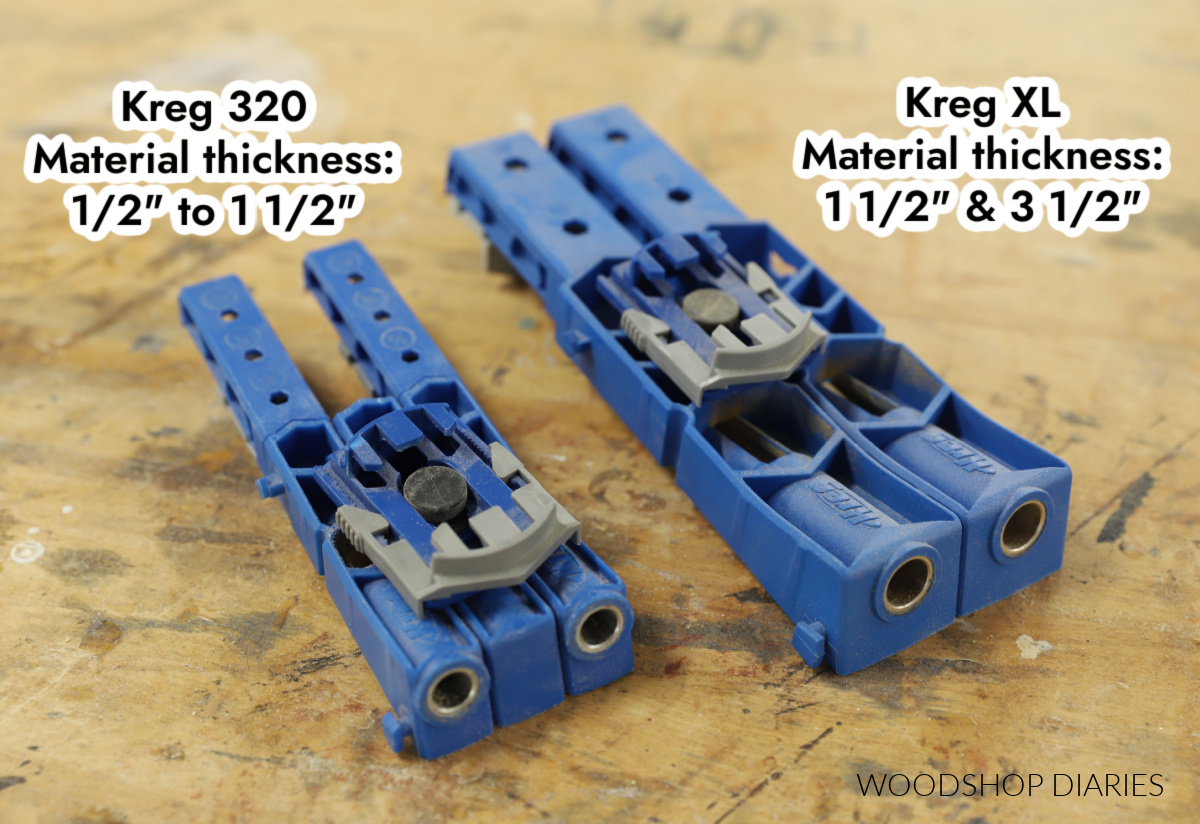
WHEN & WHY TO USE THE KREG XL JIG
The Kreg XL jig can be used in any material 1 ½″ or 3 ½″ thick. Keep in mind that 2x lumber is actually 1 ½″ thick and 4x lumber is actually 3 ½″ thick, this jig is designed specifically for use in these types of materials.
Personally, I only use the XL jig when drilling pocket holes in 4×4 material.
While the XL jig works great in 2x material as well, I generally opt for using standard size pocket holes when I can.
The larger pocket holes and screws in 2x material do make for stronger pocket hole joints, but are also more likely to cause splits in the wood.
So for those 2x joints where you feel like you need a little extra strength, the XL is a great choice. But unless you really need it, I wouldn’t recommend it.
However, for 4×4 joints, the XL jig is ideal–and pretty much the only option of pocket hole jig in that case haha.
HOW TO SET UP AND USE THE XL POCKET HOLE JIG
Setting up and using the Kreg XL pocket hole jig is quick and easy. I’ve got a quick video here if you prefer to watch:
And I’m explaining the steps below if you prefer to read.
STEP 1: SET JIG FOR BOARD THICKNESS
First, decide where/what pieces you’re drilling your pocket holes in. Set the pocket hole jig for the thickness of the board(s) you’ll be drilling the pocket holes into.
To set material thickness on the jig, slide the grey tabs on the back up or down until they click. There are two settings they’ll click into–1 ½″ or 3 ½″.

When you adjust, make sure both tabs are on the same setting.
When the jig is set for 1 ½″, the holes on the front next to the 1 ½″ mark will be grey.

When the jig is set for 3 ½″, the holes on the front next to the 3 ½″ mark will be grey.
STEP 2: SET BIT FOR BOARD THICKNESS
Once the jig is set for the correct material thickness, you’ll need to set the drill bit for the correct thickness.
The drill bit has a stop collar with a set screw. When you tighten the set screw with the hex wrench, it locks it in place. This stop collar helps give you the correct drilling depth.
The drill bit has two markings–one for 1 ½″ and one for 3 ½″.

To set the drill bit on the correct thickness, loosen the set screw on the stop collar.
Slide the stop collar up or down on the bit so that the window in the collar is lined up with the correct thickness marked on the bit.
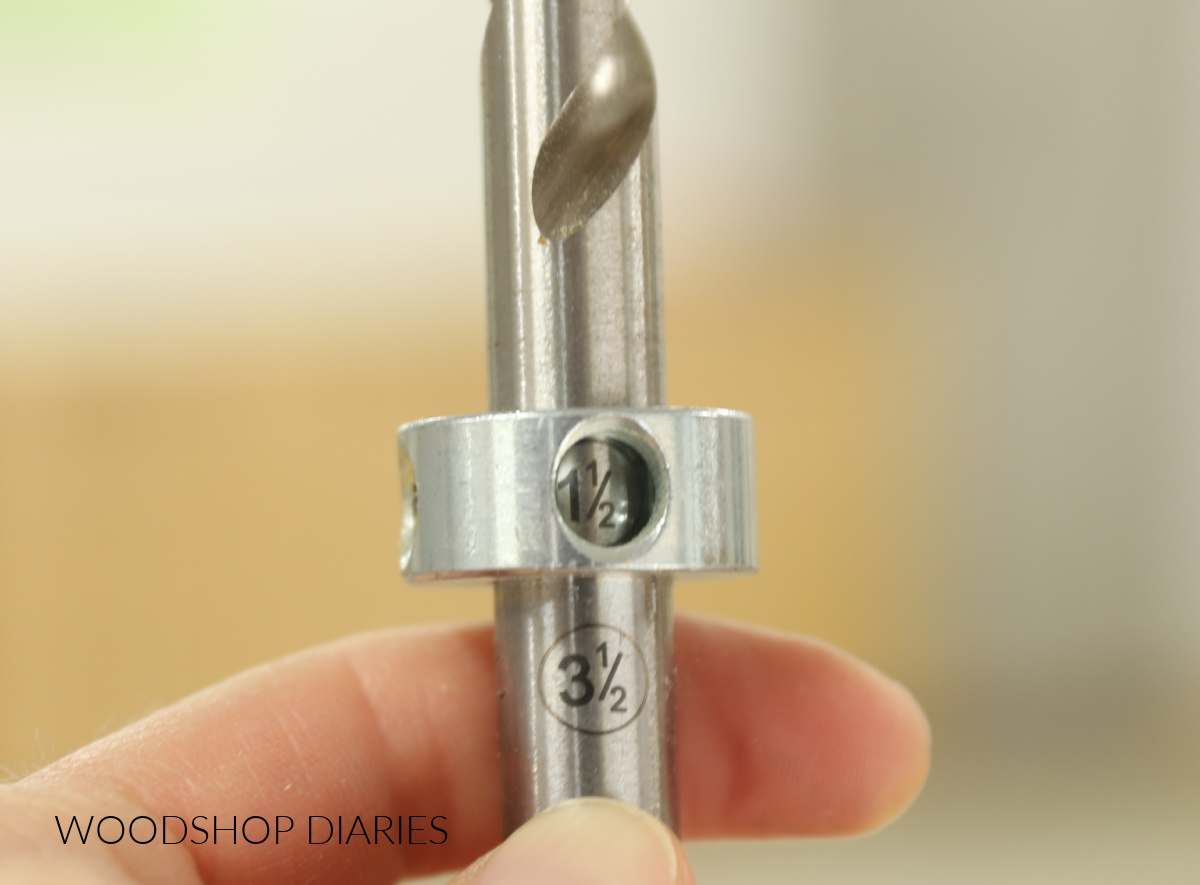
THE DRILL BIT SETTING SHOULD MATCH THE JIG SETTING FROM STEP 1. For example, if the jig is set for 3 ½″ material, the drill bit should also be set for 3 ½″ material.
Set both the jig and the drill bit to the thickness of the material the pocket holes will be drilled in.
FYI: You can purchase replacement (or spare) XL drill bits here.
STEP 3: DRILL POCKET HOLES
Once the jig and drill bit are set, insert the drill bit into your drill. Place the jig onto the end of the board so that the grey tabs are firmly against the edge and clamp tight.
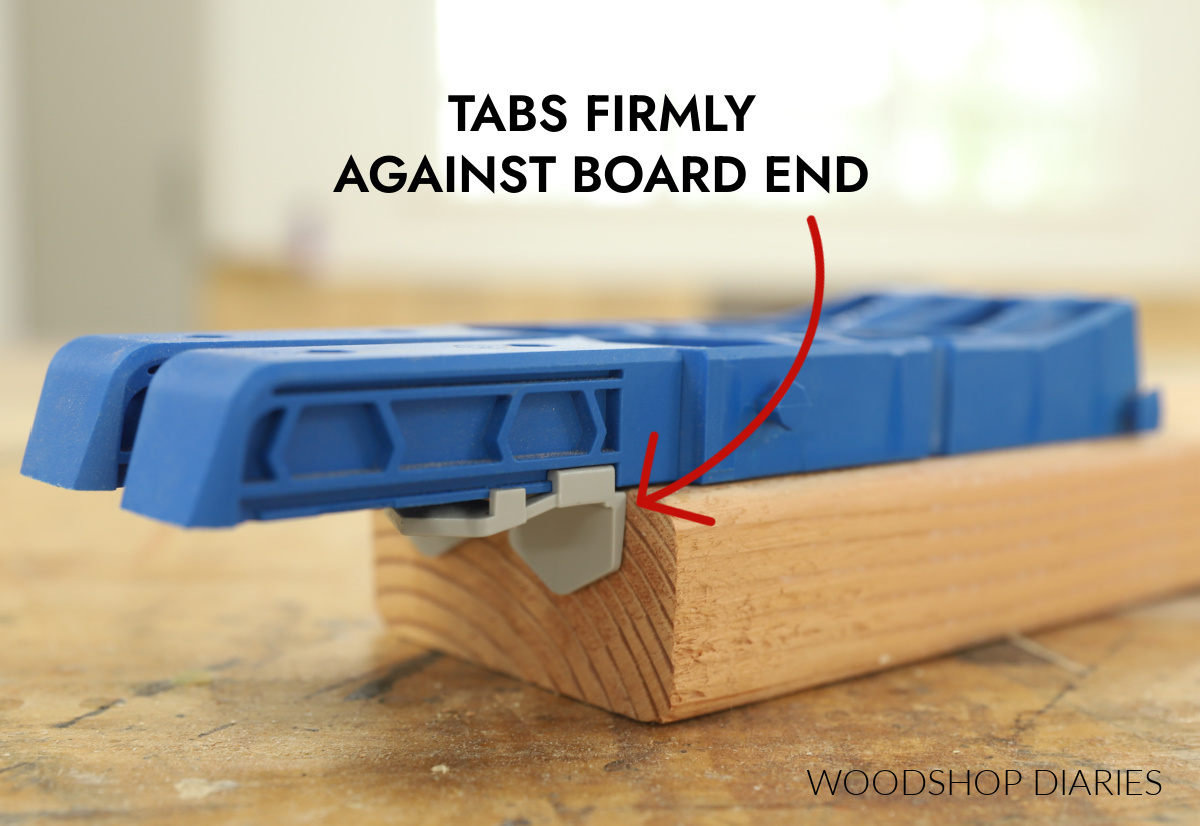
Drill into the drill guides of the jig to drill pocket holes where desired. Make sure to drill until the stop collar makes contact with the jig.
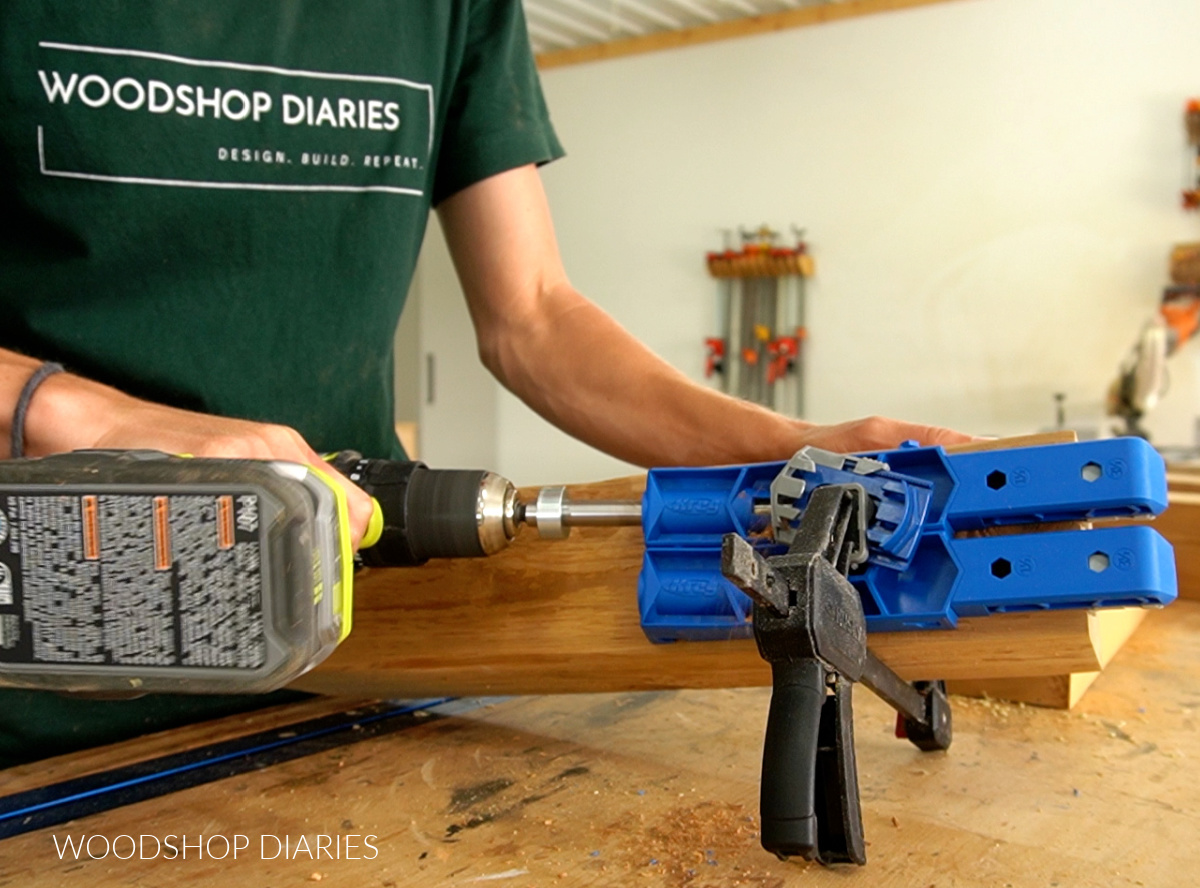
Unclamp the jig from the board.
STEP 4: DRIVE POCKET HOLE SCREWS
Now that the pocket holes are drilled, you can begin assembling your pieces. Remember to use XL pocket hole screws with XL pocket holes.
Screw length:
- When attaching 3 ½″ thick to 3 ½″ thick material, use 4″ long pocket hole screws.
- When attaching 1 ½″ thick to 1 ½″ thick material, use 2 ½″ long pocket hole screws.
- When attaching 1 ½″ thick to 3 ½″ thick material, use 2 ½″ long pocket hole screws.
Basically, if 1 ½″ thick material is involved, use 2 ½″ long screws. If not, then use 4″ long screws.
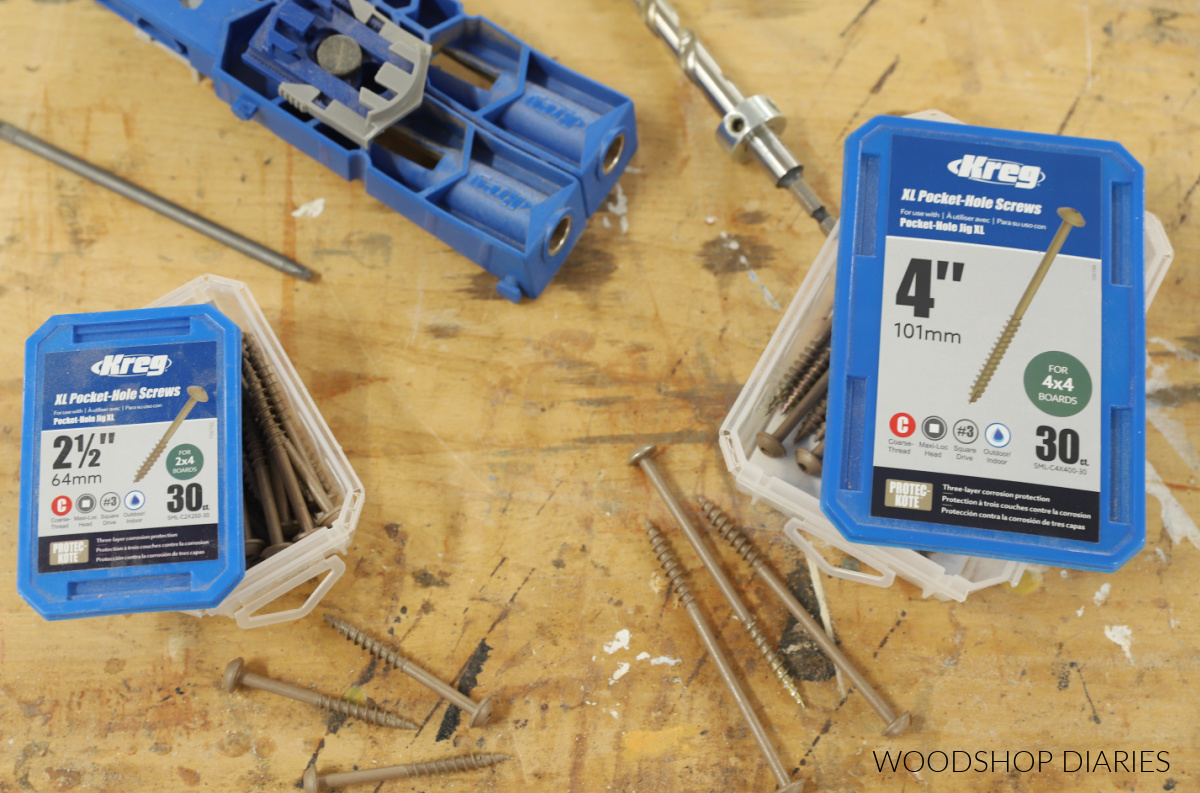
Clamp your pieces as needed and use the square driving bit included with the jig to drive the pocket hole screws through the pocket holes and into the adjoining board.
You can use EITHER a drill or a driver to drive the screws, but be careful to drive slowly and not overtighten.
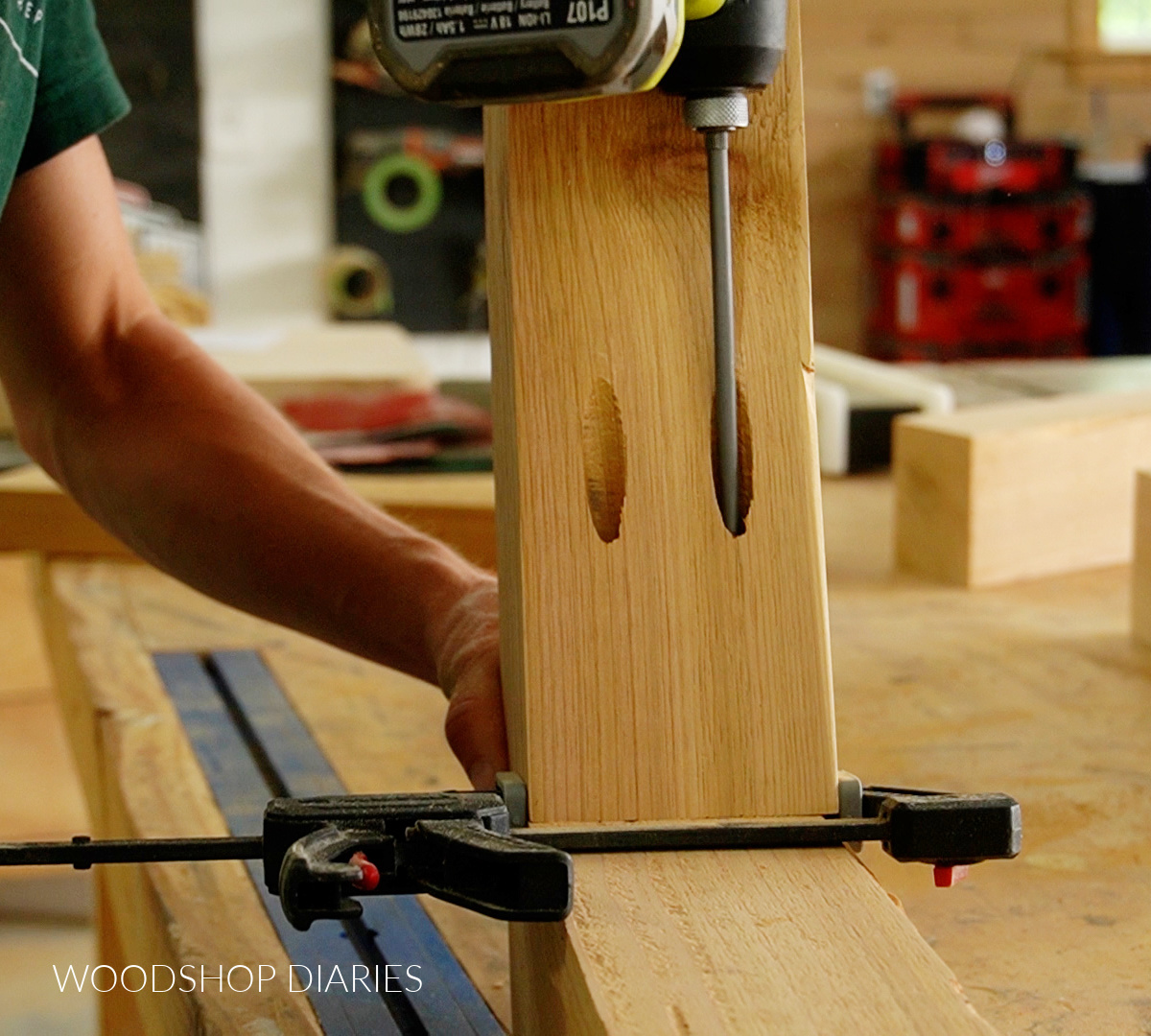
Cranking down on the screws can cause splits or misalignment. Tighten until the screw is firmly seated, then stop.
And now you’ve joined boards using an XL pocket hole jig! It’s as simple as drill, drive, and done.
For more information on pocket holes and how to use them in DIY furniture projects, see this post on how to use pocket holes.
Projects to use the XL Pocket Hole Jig With
If you’re interested to see this jig in action, below is a list of project I’ve used the Kreg XL Jig with:

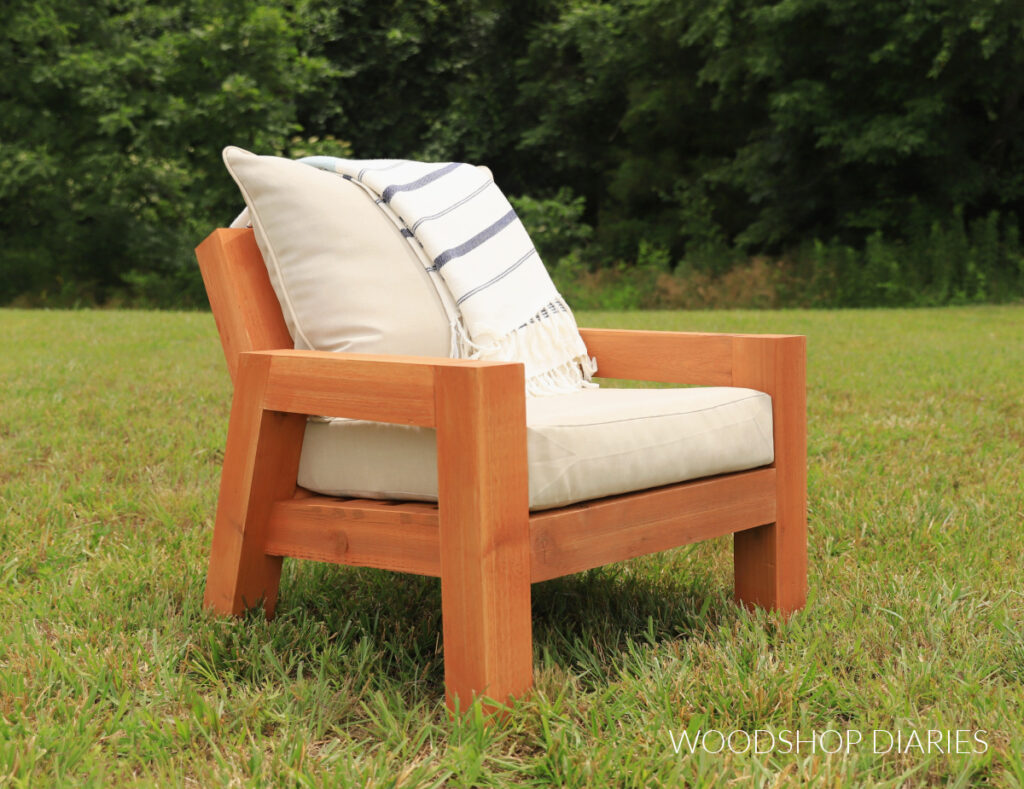
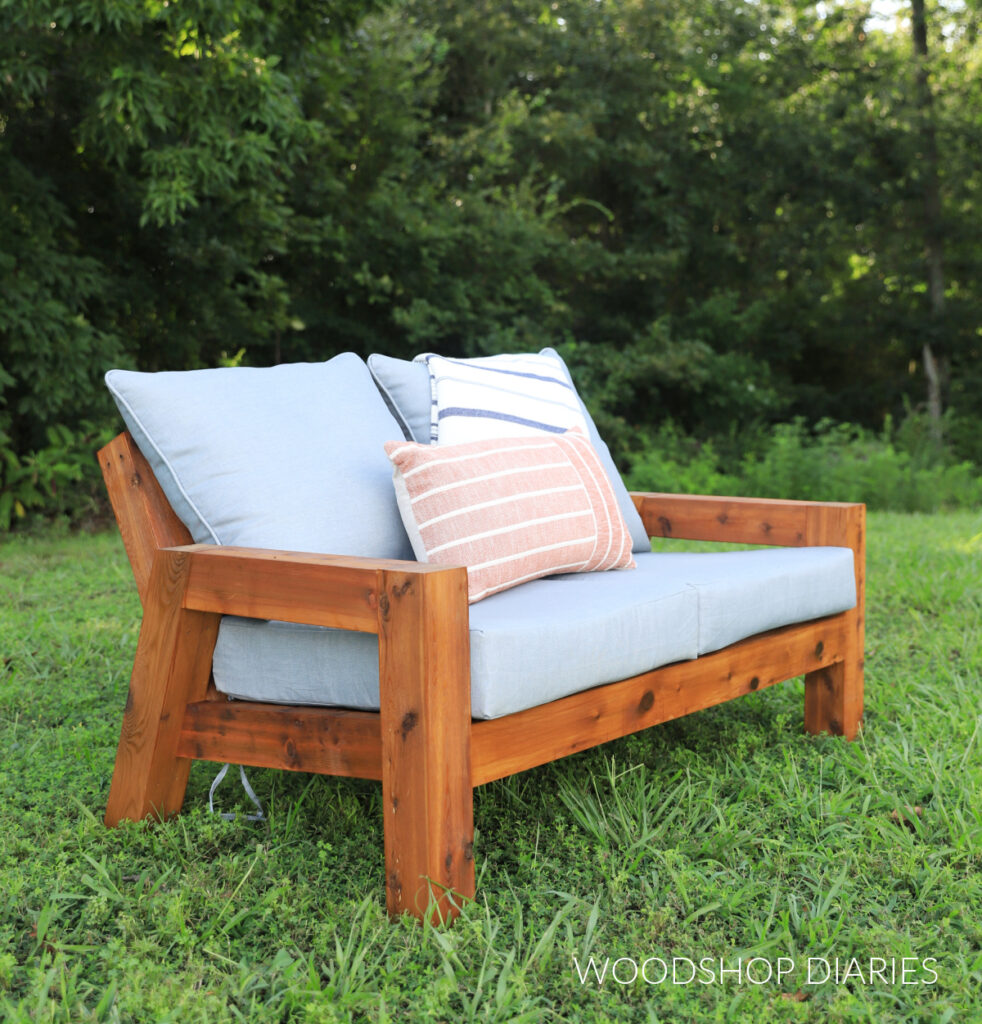
If you found this post helpful and want to save it for later, be sure to pin it or share to your favorite social channel!
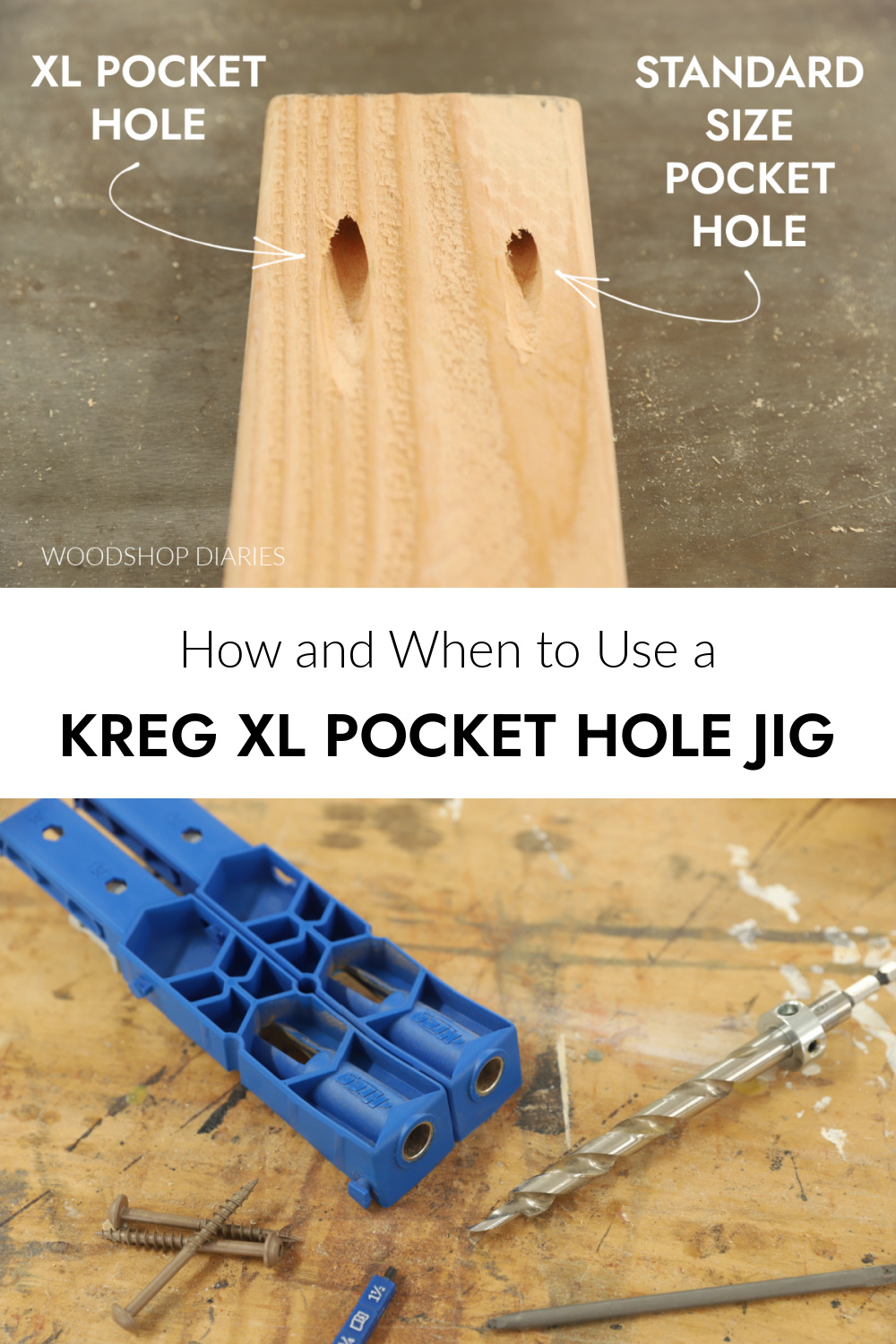
Until next time, friends, happy building!




